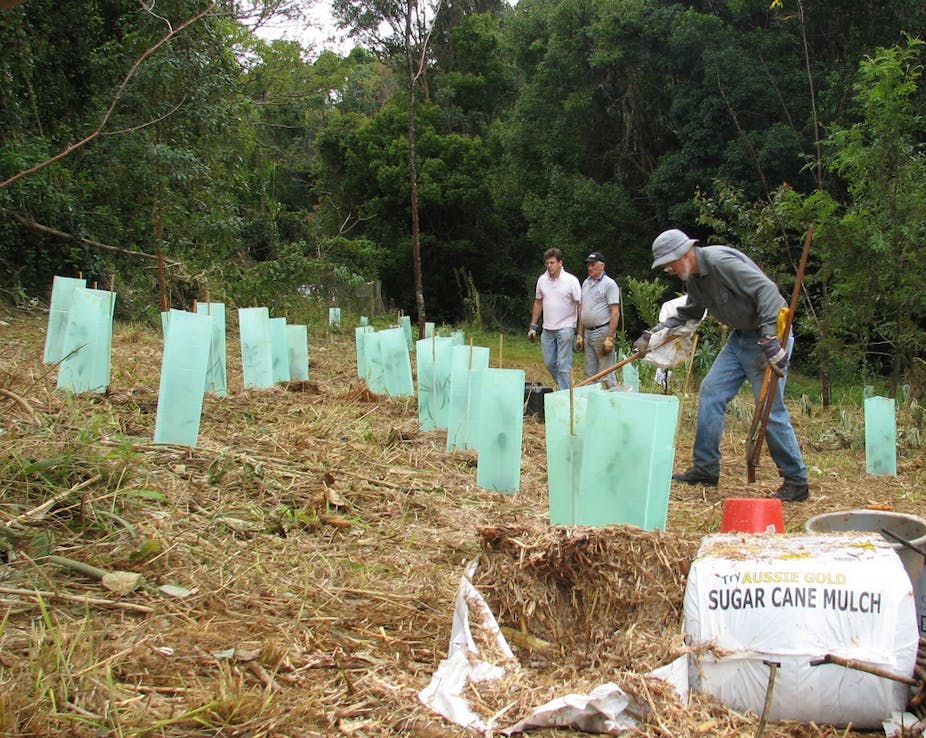For several years, and particularly since the advent of the Coalition’s Direct Action policy for reducing emissions, the potential of agricultural soils in Australia to soak up carbon has been widely debated. Proponents argue that soils can sequester a large amount of carbon and farmers should be encouraged to, and recognised for, managing their soil to increase this possibility. Others argue soils cannot do the job.
A paper published recently by Lam et al in Nature Scientific Reports - and reported widely - suggests a “direct action” soil carbon plan is “unviable”, as Australian soils are unlikely to offer a low-cost carbon sink.
The authors argue that “the potential [of] improved [management] practices to store C is limited to the surface 0–10 cm and diminishes with time”. They also suggest the cost of nitrogen required to stabilise carbon accrual negates any net profit (based on a carbon trading price of A$3.19 Mg−1 CO2-e in the voluntary market), instead resulting in a “loss of AUD 8–18 ha−1 year−1 for the first 10 years of implementation of the practice.”
This report uses a simple assumption that every kilogram of carbon sequestered requires 100g of nitrogen, following the 10:1 C:N ratio of agricultural soils reported in Carlyle et al. This assumption that the build-up of carbon requires organic matter (including nitrogen) is valid.
However, assuming nitrogen has to be artificially applied for carbon sequestration to work is an oversimplification. There are many management strategies - beyond applying nitrogen as fertiliser - that affect soil’s carbon and nitrogen balance. Soil carbon is increased by better management practices which let organic matter build up.
The Lam study is meta-analytic, combining and contrasting the results of various studies to identify patterns, sources of discrepancies and other relationships between the data. In all of the studies considered in the meta-analysis, except the studies on nitrogen fertiliser, no additional nitrogen was required to achieve additional carbon sequestration. Some of the papers included in the meta-analysis actually promote other conservation methods such as the use of nitrogen-fixing legumes in addition to no-till practices to increase carbon sequestration.
The assumed “cost” of nitrogen application is key to the authors assumption that it is not economically viable to use the soil as a carbon sink. “The N cost for C storage is often overlooked”, they argue, when “assessing the benefit of C credit earned from management practices.”
We agree: nitrogen application may aid carbon sequestration. However, it is not necessary. As the data in the paper itself illustrates, carbon stock in the top 10cm of soil was influenced most by pasture use (140 kg C ha−1 year−1), conservation tillage (139 kg C ha−1 year−1), residue retention (62 kg C ha−1 year−1). Applying nitrogen fertiliser alone provided the lowest increase, at 47 kg C ha−1 year−1.
Table 2 of the paper shows how soil carbon changes at different depths under different management practices. Despite being an illuminating table, it does offer a point of confusion. It shows that even when the preferred method is adding nitrogen fertiliser, more nitrogen has to be added to stabilise carbon storage. How can this be?
This sows uncertainty regarding their concluding economic analysis. The financial returns (or losses in this case) are based on the costs of artificial nitrogen inputs. Yet artificial N applications are not necessary for C sequestration. What is lacking, therefore, is an analysis of financial returns from alternative methods such as sowing legumes and no-till, and the three methods stated in the paper (pasture, conservation tillage, residue retention).
To benefit future research and discussion, Australia would benefit from developing a more robust carbon accounting system that directly measures changes in carbon stock from management practices. Quantifying this relationship would help prioritise management practices for increasing soil carbon stock.
While some scientists may argue the measurement and monitoring of changes in soil carbon stocks is too difficult and imbued with technical uncertainty, progress towards a methodology is underway. Researchers from the University of Sydney have patented a methodology for quantifying soil carbon, which focuses on appropriately designed sampling and a statistical approach that can give credible carbon stocks and its confidence.
Carbon sequestration potential may not be as large as some advocates propose, but current data illustrates it is not as dire as some suggest. In any case, soil scientists would agree that increasing soil carbon improves soil function. Australian soils have on average lost about half their carbon under agriculture and therefore we should strive to put it back.
This article was co-authored by Alisa Bryce. She is a soil scientist and writer with key interests in food and soil security. Alisa currently works with landscape architects and developers to design growing spaces in urban environments, and is authoring a series of popular science books on the importance of soil.

